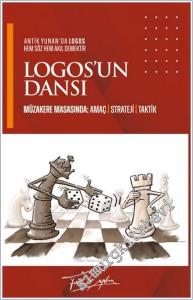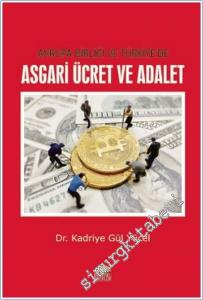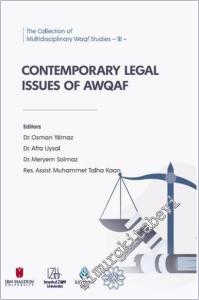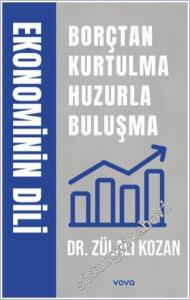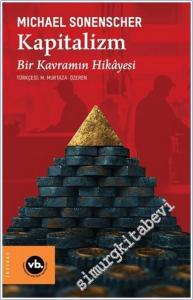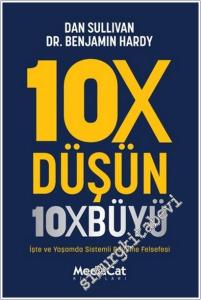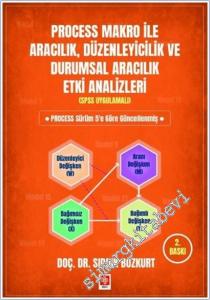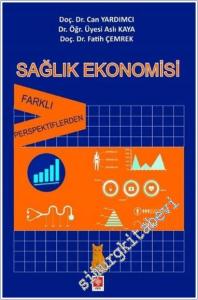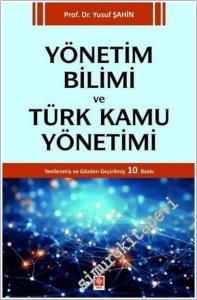#smrgKİTABEVİ Macroeconomics - 2023
Editör:
Kondisyon:
Yeni
Sunuş / Önsöz / Sonsöz / Giriş:
Basıldığı Matbaa:
Star Akans
Dizi Adı:
ISBN-10:
6256559851
Kargoya Teslim Süresi (İş Günü):
3&7
Hazırlayan:
Cilt:
Amerikan Cilt
Boyut:
16x24
Sayfa Sayısı:
406
Basım Yeri:
Bursa
Baskı:
1
Basım Tarihi:
2023
Kapak Türü:
Karton Kapak
Kağıt Türü:
Enso
Dili:
İngilizce
Kategori:
indirimli
399,50
Havale/EFT ile:
387,52
Siparişiniz 3&7 iş günü arasında kargoda
1199219684
606331
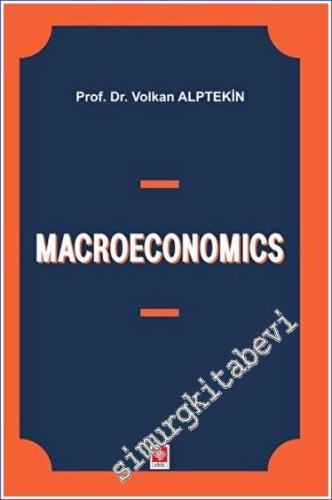
https://www.simurgkitabevi.com/macroeconomics-2023
Macroeconomics - 2023 #smrgKİTABEVİ
399.50
Contents
CHAPTER I
THE EMERGENCE OF MODERN MACROECONOMICS
A. Basic Macro Models
I. Mercantilism
II. Physiocracy
III. Classical Economics
IV. Keynesian Approach
V. Monetarist Approach
B. New Macro Models
I. New Classical Approach
II. New Keynesian Approach
III. Supply Side Approach
IV. Real Business Cycle Approach
CHAPTER 2
THE BASIC COMPONENTS OF MACROECONOMICS
A. Macro Economic Concepts
I. Economic Growth
II. Unemployment
III. Price Stability
IV. Balance of Payments
a. Current Account Balance
b. Balance of Capital Account
c. Balance of Financial Account
V. Economic Fluctuation
B. The Relationships Between Macroeconomic Quantities
I. Economic Growth - Unemployment (Okun's Law)
II. Inflation - Unemployment
III. Inflation - Economic Growth
CHAPTER 3
THE CONCEPT OF NATIONAL INCOME AND ITS MEASUREMENT METHODS
A. The Concept and Measurement of Gross Domestic Product (GDP)
I. The Elements of the Concept of Gross Domestic Product (GDP)
a. Measurement of Gross Domestic Product (GDP) at Market Prices
b. Measurement of Gross Domestic Product (GDP) by Final Goods and Services
c. Measurement of GDP for the Goods and Services Produced in the Current Accounting Period
d. Measurement of GDP for Goods and Services Produced within the Borders of the Country
e. Measurement of GDP for a Specific Period of Time
II. Measurement of GDP
a. The Output Method
b. The Expenditure Method
c. The Income Method
B. Other National Income Quantities
I. The Concept of Gross National Product (GNP)
II. Net Domestic Product (NDP)
III. Domestic Income (DI)
IV. National Income (NI)
V. Personal Income (PI)
VI. Disposable Income (DI)
C. The Concept of National Income Per Capita as a Welfare Measure
I. Exchange Rate Approach
II. Purchasing Power Parity Approach
D. The Concepts of Nominal and Real GDP
E. Need for Revision of National Income Figures
I. Subsistence Economy (Self-Consumption, Auto-consumption)
II. Unlawful and Unrecorded Economic Activities
III. Negative Externalities and Cases Where National Income Does Not Volumetrically Represent Social Welfare
IV. Work - Leisure Difference
CHAPTER 4
MEASUREMENT OF THE GENERAL LEVEL OF PRICES: INFLATION
A. Measurement of the General Level of Prices
I. GDP Deflator (Implicit Deflator)
II. Consumer Price Index (CPI)
a. Differences between GDP Deflator and CP
III. Producers Price Index (PPI)
B. Types and Sources of Inflation
I. Demand-Pull Inflation
II. Cost-Push Inflation
III. Structural Inflation
IV. Asset Inflation
V. Moderate Inflation
VI. High Rate of Inflation
VII. Hyperinflation (Galloping Inflation)
VIII. Obsidional Inflation
IX. Taxflation
X. Stagflation
XI. Slumpflation
XII. Deflation
XIII. Reflation
XIV. Disinflation
XV. Core Inflation (Customized Consumer Price Index)
C. Disadvantages Arising from Inflation
I. Divergence of Expected Inflation from Actual Inflation
II. The Case of Actual Inflation Equal to Expected Inflation
a. Menu Costs
b. Shoe Leather Costs
c. The Noise Effect on Price Mechanism
d. Tax Distortions
CHAPTER 5
EMPLOYMENT - UNEMPLOYMENT
A. The Concept of Unemployment
I. The Rate of Unemployment
II. The Rate of Employment
III. Labor Participation Force
B. The Types of Unemployment
I. Hidden Unemployment (Disguized Unemployment)
II. Involuntary Unemployment
III. Voluntary Unemployment
IV. Frictional Unmployment
V. Structural Unemployment
VI. Seasonal Unemployment
VII. The Natural Rate of Unemployment
VIII. Cyclical Unemployment
IX. Technological Unemployment
C. Factors Determining the Length of Unemployment
D. Hysteresis Hypothesis and Insider-Outsider Theories
E. The Costs of Unemployment
F. Economic Discomfort Index (EDI)
G. Labor Market: Sticky Wage and Unemployment
H. The Trade-off Between Unemployment and Inflation
I. Initial Phillips Curve
II. Phillips Curve with Expectations
CHAPTER 6
DETERMINATION OF INTEREST RATE AND EXCHANGE RATE
A. The Concept of Interest Rate
I. Nominal Interest Rate
a. Yield Curve
II. Real Interest Rate
III. The Concept of Present Value
IV. Interest Rate for Fixed Payments
V. Yield to Maturity
B. Exchange Rate
I. Nominal Exchange Rate
a. Nominal Effective Exchange Rate Index
II. Real Exchange Rate
III. Determination of the Equilibrium Level of the Exchange Rate
a. Providing Long-Term Equilibrium of the Exchange Rate
1. Changes in the Long Run Equilibrium of the Exchange Rate
2. Purchasing Power Parity
b. Providing Short-Term Equilibrium of the Exchange Rate
1. Interest Rate Parity Approach
IV. Exchange Rate Regimes
a. Managed Floating Regime
b. Floating Within a Band Regime
c. Sliding Band Regime
d. Crawling Band Regime
e. Crawling Peg Regime
f. Adjustable Peg Regime
g. Currency Board Regime
h. Full Dolarization Regime
CHAPTER 7
NATIONAL INCOME IDENTITIES
A. Consumption and The Consumption Function
I. Determinants of Consumption
II. Consumption Function
a. Marginal Propensity to Consume (MPC)
b. Average Propensity to Consume (APC)
B. Saving and the Saving Function
I. Marginal Propensity to Save (MPS)
II. Average Propensity to Save (APS)
C. Investment and Investment Function
I. Investment Function
a. Marginal Propensity to Invest
b. Average Propensity to Invest (API)
II. Evaluation of Investment Projects and Present Value Criterion
III. The Concept of Marginal Efficiency of Capital
IV. The Accelerator Model and Its Workings
a. Criticisms of the Accelerator Hypothesis
V. Tobin's Q Ratio
CHAPTER 8
DETERMINING THE EQUILIBRIUM LEVEL OF NATIONAL INCOME
A. Determining the Equilibrium Level of National Income in a Closed Economic Model
I. Obtaining the Aggregate Planned Expenditure Equation in a Closed Economy Through Keynesian Cross
II. Determining the Equilibrium Level of National Income According to Aggregate Supply-Aggregate Demand
III. Determining the Equilibrium Level of National Income According to the SSaving-Investment Equation
IV. Multiplier Mechanism
a. Simple Multiplier
b. Super Multiplier
c. Conclusions for the Multiplier Mechanism
d. Government Purchases Multiplier
e. Transfer Payment Multiplier
f. Tax Multiplier
g. Balanced Budget Multiplier (Haavelmo Theorem)
V. Relationships between National Income Identities in a Closed Economy
VI. Savings Paradox
VII. Automatic Stabilizers
VIII. Deviations of Real GDP from the Full Employment Output Rate in the Keynesian Model
a. Inflationary Deficit
b. Deflationary Gap
CHAPTER 9
ESTABLISHMENT OF MONEY, INTEREST AND NATIONAL INCOME EQILIBRIUM IN GOODS AND MONEY MARKETS: IS - LM MODEL (HICKS - HANSEN MODEL)
A. Establishment of Equilibrium in the Goods Market
I. Derivation of the IS Curve
II. Obtaining the Equation of IS Curve
III. Slope of the IS Curve
IV. Shifts in the IS Curve
V. Disequilibrium in the Goods Market
B. Establishment of Equilibrium in the Money Market
I. Derivation of LM Curve
II. Obtaining the Equation of LM Curve
III. Slope of the LM Curve
IV. Shifts in the LM Curve
V. Measurement of the Effect of Change in Money Supply on National Income
VI. Disequilibrium in the Money Market
C. Simultaneous Equilibrium in Goods and Money Markets
I. Disequilibrium in Goods and Money Markets
II. Shifts of IS and LM Curves and Macroeconomic Equilibrium
CHAPTER 10
THE FUNCTIONING OF MONETARY AND FISCAL POLICIES 183
A. Monetary Policy
I. Expansionary Monetary Policy
II. Contractionary Monetary Policy
III. Effectiveness of Monetary Policy
a. Effectiveness of Monetary Policy: Slope of the IS Curve
b. Effectiveness of Monetary Policy: Slope of the LM Curve
1. Obtaining the Monetary Policy Multiplier
IV. Exceptional Forms of the LM Curve
a. Liquidity Trap (h=?)
b. Money Demand is Completely Insensitive to the Interest Rate (h=0)
c. Investments Completely Insensitive to Interest Rate (b=0)
B. Fiscal Policy
I. Expansionary Fiscal Policy
II. Contractionary Fiscal Policy
III. Effectiveness of Fiscal Policy
a. Effectiveness of Fiscal Policy: Slope of the IS Curve
1. Obtaining the Fiscal Policy Multiplier
IV. Exceptional Forms of the IS Curve
a. Liquidity Trap (h=?)
b. Money Demand is Completely Insensitive to the Interest Rate (h=0)
c. Investments Completely Insensitive to Interest Rate (b=0)
C. The Combination of Expansionary Monetary and Expansionary Fiscal Policies (Policy Mix)
CHAPTER 11
AGGREGATE DEMAND - AGGREGATE SUPPLY MODEL
A. Aggregate Demand (AD)
I. Derivation of Aggregate Demand Curve (AD)
a. Deriving the Aggregate Demand Curve (AD) from the Simultaneous Equilibrium in Goods and Money Markets
b. Deriving the Aggregate Demand Curve (AD) from the Expenditure Principle in the Basic Keynesian Model
II. The Slope of the Aggregate Demand Curve (AD)
a. Obtaining the Equation of AD Curve
III. Shifts in the Aggregate Demand AD Curve
a. The Impact of the Shift in the IS Curve on the AD Curve
b. The Impact of the Shift in the LM Curve on the AD Curve
B. Aggregate Supply (AS)
I. The Classical Aggregate Supply Curve
II. The Keynesian Aggregate Supply Curve
III. Short Run Aggregate Supply Curve
a. Rigid (Sticky) Wage and Price Model
b. Causes of Wage and Price Rigidities in the Short Run
1. Coordination Failures
2. Menu Costs and Externalities
3. Efficient Wage Theory
4. Long-term Contracts (Agreements)
5. Uncoordination in Prices
6. Insider - Outsider Model
c. Misperception Models
1. Worker-Misperception Model
2. Imperfect Information Model
d. Lucas Critique
IV. Short and Long Run Aggregate Supply Curves
V. Supply Shocks
a. Negative Supply Shocks
b. Positive Supply Shocks
VI. Long Run Equilibrium in Aggregate Demand - Aggregate Supply Model
CHAPTER 12
OTHER MODELS BASED ON CLASSICAL AND KEYNESIAN MACROECONOMIC MODELS
A. The Monetarist Approach
B. New Classical Approach
C. New Keynesian Approach
CHAPTER 13
AN OPEN ECONOMY MODEL
A. Import
B. Export
C. Aggregate Planned Expenditure Equation in an Open Economy Model
I. Aggregate Planned Expenditure Curve in an Open Economy Model
II. National Income Equilibrium in an Open Economy
III. National Income Equilibrium Level According to the Savings-Investment Equation
IV. Relationships between National Income Identities in an Open Economy
V. Multiplier Coefficient in an Open Economy
VI. Devaluation (Depreciation of the National Currency)
a. Marshall - Lerner Condition
b. J Curve
CHAPTER 14
SIMULTANEOUS EQUILIBRIUM IN COMMODITY, MONEY AND FOREIGN EXCHANGE MARKETS: MUNDELL - FLEMING MODEL (IS - LM - BP MODEL)
A. Goods Market Equilibrium in an Open Economy Model
I. Equilibrium in the Goods Market: Obtaining the IS Curve
II. The Equation of the IS Curve
III. Shifts in IS Curve
B. Equilibrium in the Foreign Exchange Market
I. Obtaining BP Curve
II. Equation of BP Curve
III. Slope of BP Curve
IV. Shifts in BP Curve
V. Changes in Real Exchange Rate and Real National Income
VI. Disequilibrium in the Foreign Exchange Market
C. Simultaneous Equilibrium in Goods, Money and Foreign Exchange Markets: Mundell-Fleming Model (IS - LM - BP Model)
I. Equilibrium in the Goods-Money-Exchange Market under Perfect Capital Mobility (IS-LM-BP Model)
a. Effectiveness of Fiscal Policy under Flexible Exchange Rate Regime
b. Effectiveness of Fiscal Policy Under a Fixed Exchange Rate Regime
c. Effectiveness of Monetary Policy Under Flexible Exchange Rate Regime
d. Effectiveness of Monetary Policy Under a Fixed Exchange Rate Regime
II. Equilibrium in the Goods-Money-Exchange Market under Partial Capital Mobility (IS-LM-BP Model)
a. Effectiveness of Fiscal Policy under Flexible Exchange Rate Regime
b. Effectiveness of Fiscal Policy Under a Fixed Exchange Rate Regime
c. Effectiveness of Monetary Policy Under Flexible Exchange Rate Regime
d. Effectiveness of Monetary Policy Under a Fixed Exchange Rate Regime
III. Equilibrium in the Goods-Currency-Exchange Market under Zero Capital Mobility (IS-LM-BP Model)
a. Effectiveness of Fiscal Policy under Flexible Exchange Rate Regime
b. Effectiveness of Fiscal Policy Under a Fixed Exchange Rate Regime
c. Effectiveness of Monetary Policy Under Flexible Exchange Rate Regime
d. Effectiveness of Monetary Policy Under a Fixed Exchange Rate Regime
D. The Impossible Trinity (Trilemma)
E. Exchange Rate Overshooting
CHAPTER 15
STRUCTURING THE MACROECONOMIC ARCHITECTURE ON MICROECONOMIC BASIS
A. Absolute Income Hypothesis
B. Relative Income Hypothesis
C. Intertemporal Consumption Choice
D. Life-Cycle Income Hypothesis
E. Permanent Income Hypothesis
F. Random Walk Model
G. Instant Gratification
CHAPTER 16
THE CONCEPT OF MONEY AND MONETARY POLICIES
A. Basic Theoretical Monetary Concepts
I. Functions of Money
a. The Function of Money as a Medium of Exchange
b. The Function of Money as a Common Value Measure (Unit of Account)
c. The Function of Money as a Store of Value (Savings)
d. The Function of Money as an Economic Policy Instrument
II. Types of Money
B. Money Aggregates and the Concept of Money Supply
I. Money Supply Determination Process
a. The Process of Creating Dematerialized Money (Bank Money)
1. How Banks Hold Reserves and Its Economic Impact
2. Cash Holding Preference of the Non-Banking Sector
II. Monetary Base (Base Money)
C. Monetary Policy
I. Traditional Monetary Policy Instruments
a. Open Market Operations
1. The Implications of Open Market Operations for the Economy
2. Classification of Open Market Operations
i. Open Market Operations According to the Reasons for Its Emergence
ii. Types of Open Market Operations
3. Advantages and Disadvantages of Open Market Operations
b. Rediscount Policy
1. Types of Rediscount Transactions
2. Accounting of Rediscount Credits
3. The Impact of Changes in Rediscont Credits on the Economy
4. Advantages and Disadvantages of the Rediscount Policy
5. Reformist Approaches to Rediscount Policy
6. Required Reserve Ratios (Deposit Reserve Ratios)
i. Impact of the Change in the Reserve Requirement Ratio on the Economy
ii. Advantages and Disadvantages of the Reserve Requirement Policy
II. Unconventional (Modern) Monetary Policy Instruments
a. Quantitative Easing
b. Credit Expansion
c. Interest Commitment
1. Forward Guidence
i. Open-ended Forward Guidance
ii. Date-Contingent Guidance
iii. State-Contingent Guidance
d. Updated Restatement of the Reserve Requirement Ratio
1. A Flexible Monetary Policy Implementation: Reserve Options Mechanism (ROM)
e. Interest Rate Corridor (IRC)
D. Money Demand 381
I. Classical Money Demand Theory: Quantity Theory of Money
a. Fisher's Quantity Theory of Money
b. Quantity Theory of Money: Cambridge Approach
c. Keynesian Theory of Money Demand
1. Theory of Liquidity Preference
i. Transactions Demand For Money
ii. Precautionary Demand for Money
iii. Speculative Demand For Money
2. Baumol - Tobin Theory of Demand for Money
3. Tobin's Risk Money Demand Model
d. Modern Quantity Theory of Money
e. Overlapping Generations Model
CHAPTER 17
PUBLIC DEBT AND BUDGET CONCEPT
A. Budget Concept
I. Concepts of Full Employment and Cyclical Budget Deficit
II. Economic Dimension of Budget Deficit or Surplus
a. Pessimistic - Traditional Approach
b. Optimistic - Ricardian Equivalence Theorem
B. Supply-Side Economic Approach
I. Laffer Curve
C. Financing Budget Deficits
D. Inflation - Seigniorage and Budget Deficits
References
CHAPTER I
THE EMERGENCE OF MODERN MACROECONOMICS
A. Basic Macro Models
I. Mercantilism
II. Physiocracy
III. Classical Economics
IV. Keynesian Approach
V. Monetarist Approach
B. New Macro Models
I. New Classical Approach
II. New Keynesian Approach
III. Supply Side Approach
IV. Real Business Cycle Approach
CHAPTER 2
THE BASIC COMPONENTS OF MACROECONOMICS
A. Macro Economic Concepts
I. Economic Growth
II. Unemployment
III. Price Stability
IV. Balance of Payments
a. Current Account Balance
b. Balance of Capital Account
c. Balance of Financial Account
V. Economic Fluctuation
B. The Relationships Between Macroeconomic Quantities
I. Economic Growth - Unemployment (Okun's Law)
II. Inflation - Unemployment
III. Inflation - Economic Growth
CHAPTER 3
THE CONCEPT OF NATIONAL INCOME AND ITS MEASUREMENT METHODS
A. The Concept and Measurement of Gross Domestic Product (GDP)
I. The Elements of the Concept of Gross Domestic Product (GDP)
a. Measurement of Gross Domestic Product (GDP) at Market Prices
b. Measurement of Gross Domestic Product (GDP) by Final Goods and Services
c. Measurement of GDP for the Goods and Services Produced in the Current Accounting Period
d. Measurement of GDP for Goods and Services Produced within the Borders of the Country
e. Measurement of GDP for a Specific Period of Time
II. Measurement of GDP
a. The Output Method
b. The Expenditure Method
c. The Income Method
B. Other National Income Quantities
I. The Concept of Gross National Product (GNP)
II. Net Domestic Product (NDP)
III. Domestic Income (DI)
IV. National Income (NI)
V. Personal Income (PI)
VI. Disposable Income (DI)
C. The Concept of National Income Per Capita as a Welfare Measure
I. Exchange Rate Approach
II. Purchasing Power Parity Approach
D. The Concepts of Nominal and Real GDP
E. Need for Revision of National Income Figures
I. Subsistence Economy (Self-Consumption, Auto-consumption)
II. Unlawful and Unrecorded Economic Activities
III. Negative Externalities and Cases Where National Income Does Not Volumetrically Represent Social Welfare
IV. Work - Leisure Difference
CHAPTER 4
MEASUREMENT OF THE GENERAL LEVEL OF PRICES: INFLATION
A. Measurement of the General Level of Prices
I. GDP Deflator (Implicit Deflator)
II. Consumer Price Index (CPI)
a. Differences between GDP Deflator and CP
III. Producers Price Index (PPI)
B. Types and Sources of Inflation
I. Demand-Pull Inflation
II. Cost-Push Inflation
III. Structural Inflation
IV. Asset Inflation
V. Moderate Inflation
VI. High Rate of Inflation
VII. Hyperinflation (Galloping Inflation)
VIII. Obsidional Inflation
IX. Taxflation
X. Stagflation
XI. Slumpflation
XII. Deflation
XIII. Reflation
XIV. Disinflation
XV. Core Inflation (Customized Consumer Price Index)
C. Disadvantages Arising from Inflation
I. Divergence of Expected Inflation from Actual Inflation
II. The Case of Actual Inflation Equal to Expected Inflation
a. Menu Costs
b. Shoe Leather Costs
c. The Noise Effect on Price Mechanism
d. Tax Distortions
CHAPTER 5
EMPLOYMENT - UNEMPLOYMENT
A. The Concept of Unemployment
I. The Rate of Unemployment
II. The Rate of Employment
III. Labor Participation Force
B. The Types of Unemployment
I. Hidden Unemployment (Disguized Unemployment)
II. Involuntary Unemployment
III. Voluntary Unemployment
IV. Frictional Unmployment
V. Structural Unemployment
VI. Seasonal Unemployment
VII. The Natural Rate of Unemployment
VIII. Cyclical Unemployment
IX. Technological Unemployment
C. Factors Determining the Length of Unemployment
D. Hysteresis Hypothesis and Insider-Outsider Theories
E. The Costs of Unemployment
F. Economic Discomfort Index (EDI)
G. Labor Market: Sticky Wage and Unemployment
H. The Trade-off Between Unemployment and Inflation
I. Initial Phillips Curve
II. Phillips Curve with Expectations
CHAPTER 6
DETERMINATION OF INTEREST RATE AND EXCHANGE RATE
A. The Concept of Interest Rate
I. Nominal Interest Rate
a. Yield Curve
II. Real Interest Rate
III. The Concept of Present Value
IV. Interest Rate for Fixed Payments
V. Yield to Maturity
B. Exchange Rate
I. Nominal Exchange Rate
a. Nominal Effective Exchange Rate Index
II. Real Exchange Rate
III. Determination of the Equilibrium Level of the Exchange Rate
a. Providing Long-Term Equilibrium of the Exchange Rate
1. Changes in the Long Run Equilibrium of the Exchange Rate
2. Purchasing Power Parity
b. Providing Short-Term Equilibrium of the Exchange Rate
1. Interest Rate Parity Approach
IV. Exchange Rate Regimes
a. Managed Floating Regime
b. Floating Within a Band Regime
c. Sliding Band Regime
d. Crawling Band Regime
e. Crawling Peg Regime
f. Adjustable Peg Regime
g. Currency Board Regime
h. Full Dolarization Regime
CHAPTER 7
NATIONAL INCOME IDENTITIES
A. Consumption and The Consumption Function
I. Determinants of Consumption
II. Consumption Function
a. Marginal Propensity to Consume (MPC)
b. Average Propensity to Consume (APC)
B. Saving and the Saving Function
I. Marginal Propensity to Save (MPS)
II. Average Propensity to Save (APS)
C. Investment and Investment Function
I. Investment Function
a. Marginal Propensity to Invest
b. Average Propensity to Invest (API)
II. Evaluation of Investment Projects and Present Value Criterion
III. The Concept of Marginal Efficiency of Capital
IV. The Accelerator Model and Its Workings
a. Criticisms of the Accelerator Hypothesis
V. Tobin's Q Ratio
CHAPTER 8
DETERMINING THE EQUILIBRIUM LEVEL OF NATIONAL INCOME
A. Determining the Equilibrium Level of National Income in a Closed Economic Model
I. Obtaining the Aggregate Planned Expenditure Equation in a Closed Economy Through Keynesian Cross
II. Determining the Equilibrium Level of National Income According to Aggregate Supply-Aggregate Demand
III. Determining the Equilibrium Level of National Income According to the SSaving-Investment Equation
IV. Multiplier Mechanism
a. Simple Multiplier
b. Super Multiplier
c. Conclusions for the Multiplier Mechanism
d. Government Purchases Multiplier
e. Transfer Payment Multiplier
f. Tax Multiplier
g. Balanced Budget Multiplier (Haavelmo Theorem)
V. Relationships between National Income Identities in a Closed Economy
VI. Savings Paradox
VII. Automatic Stabilizers
VIII. Deviations of Real GDP from the Full Employment Output Rate in the Keynesian Model
a. Inflationary Deficit
b. Deflationary Gap
CHAPTER 9
ESTABLISHMENT OF MONEY, INTEREST AND NATIONAL INCOME EQILIBRIUM IN GOODS AND MONEY MARKETS: IS - LM MODEL (HICKS - HANSEN MODEL)
A. Establishment of Equilibrium in the Goods Market
I. Derivation of the IS Curve
II. Obtaining the Equation of IS Curve
III. Slope of the IS Curve
IV. Shifts in the IS Curve
V. Disequilibrium in the Goods Market
B. Establishment of Equilibrium in the Money Market
I. Derivation of LM Curve
II. Obtaining the Equation of LM Curve
III. Slope of the LM Curve
IV. Shifts in the LM Curve
V. Measurement of the Effect of Change in Money Supply on National Income
VI. Disequilibrium in the Money Market
C. Simultaneous Equilibrium in Goods and Money Markets
I. Disequilibrium in Goods and Money Markets
II. Shifts of IS and LM Curves and Macroeconomic Equilibrium
CHAPTER 10
THE FUNCTIONING OF MONETARY AND FISCAL POLICIES 183
A. Monetary Policy
I. Expansionary Monetary Policy
II. Contractionary Monetary Policy
III. Effectiveness of Monetary Policy
a. Effectiveness of Monetary Policy: Slope of the IS Curve
b. Effectiveness of Monetary Policy: Slope of the LM Curve
1. Obtaining the Monetary Policy Multiplier
IV. Exceptional Forms of the LM Curve
a. Liquidity Trap (h=?)
b. Money Demand is Completely Insensitive to the Interest Rate (h=0)
c. Investments Completely Insensitive to Interest Rate (b=0)
B. Fiscal Policy
I. Expansionary Fiscal Policy
II. Contractionary Fiscal Policy
III. Effectiveness of Fiscal Policy
a. Effectiveness of Fiscal Policy: Slope of the IS Curve
1. Obtaining the Fiscal Policy Multiplier
IV. Exceptional Forms of the IS Curve
a. Liquidity Trap (h=?)
b. Money Demand is Completely Insensitive to the Interest Rate (h=0)
c. Investments Completely Insensitive to Interest Rate (b=0)
C. The Combination of Expansionary Monetary and Expansionary Fiscal Policies (Policy Mix)
CHAPTER 11
AGGREGATE DEMAND - AGGREGATE SUPPLY MODEL
A. Aggregate Demand (AD)
I. Derivation of Aggregate Demand Curve (AD)
a. Deriving the Aggregate Demand Curve (AD) from the Simultaneous Equilibrium in Goods and Money Markets
b. Deriving the Aggregate Demand Curve (AD) from the Expenditure Principle in the Basic Keynesian Model
II. The Slope of the Aggregate Demand Curve (AD)
a. Obtaining the Equation of AD Curve
III. Shifts in the Aggregate Demand AD Curve
a. The Impact of the Shift in the IS Curve on the AD Curve
b. The Impact of the Shift in the LM Curve on the AD Curve
B. Aggregate Supply (AS)
I. The Classical Aggregate Supply Curve
II. The Keynesian Aggregate Supply Curve
III. Short Run Aggregate Supply Curve
a. Rigid (Sticky) Wage and Price Model
b. Causes of Wage and Price Rigidities in the Short Run
1. Coordination Failures
2. Menu Costs and Externalities
3. Efficient Wage Theory
4. Long-term Contracts (Agreements)
5. Uncoordination in Prices
6. Insider - Outsider Model
c. Misperception Models
1. Worker-Misperception Model
2. Imperfect Information Model
d. Lucas Critique
IV. Short and Long Run Aggregate Supply Curves
V. Supply Shocks
a. Negative Supply Shocks
b. Positive Supply Shocks
VI. Long Run Equilibrium in Aggregate Demand - Aggregate Supply Model
CHAPTER 12
OTHER MODELS BASED ON CLASSICAL AND KEYNESIAN MACROECONOMIC MODELS
A. The Monetarist Approach
B. New Classical Approach
C. New Keynesian Approach
CHAPTER 13
AN OPEN ECONOMY MODEL
A. Import
B. Export
C. Aggregate Planned Expenditure Equation in an Open Economy Model
I. Aggregate Planned Expenditure Curve in an Open Economy Model
II. National Income Equilibrium in an Open Economy
III. National Income Equilibrium Level According to the Savings-Investment Equation
IV. Relationships between National Income Identities in an Open Economy
V. Multiplier Coefficient in an Open Economy
VI. Devaluation (Depreciation of the National Currency)
a. Marshall - Lerner Condition
b. J Curve
CHAPTER 14
SIMULTANEOUS EQUILIBRIUM IN COMMODITY, MONEY AND FOREIGN EXCHANGE MARKETS: MUNDELL - FLEMING MODEL (IS - LM - BP MODEL)
A. Goods Market Equilibrium in an Open Economy Model
I. Equilibrium in the Goods Market: Obtaining the IS Curve
II. The Equation of the IS Curve
III. Shifts in IS Curve
B. Equilibrium in the Foreign Exchange Market
I. Obtaining BP Curve
II. Equation of BP Curve
III. Slope of BP Curve
IV. Shifts in BP Curve
V. Changes in Real Exchange Rate and Real National Income
VI. Disequilibrium in the Foreign Exchange Market
C. Simultaneous Equilibrium in Goods, Money and Foreign Exchange Markets: Mundell-Fleming Model (IS - LM - BP Model)
I. Equilibrium in the Goods-Money-Exchange Market under Perfect Capital Mobility (IS-LM-BP Model)
a. Effectiveness of Fiscal Policy under Flexible Exchange Rate Regime
b. Effectiveness of Fiscal Policy Under a Fixed Exchange Rate Regime
c. Effectiveness of Monetary Policy Under Flexible Exchange Rate Regime
d. Effectiveness of Monetary Policy Under a Fixed Exchange Rate Regime
II. Equilibrium in the Goods-Money-Exchange Market under Partial Capital Mobility (IS-LM-BP Model)
a. Effectiveness of Fiscal Policy under Flexible Exchange Rate Regime
b. Effectiveness of Fiscal Policy Under a Fixed Exchange Rate Regime
c. Effectiveness of Monetary Policy Under Flexible Exchange Rate Regime
d. Effectiveness of Monetary Policy Under a Fixed Exchange Rate Regime
III. Equilibrium in the Goods-Currency-Exchange Market under Zero Capital Mobility (IS-LM-BP Model)
a. Effectiveness of Fiscal Policy under Flexible Exchange Rate Regime
b. Effectiveness of Fiscal Policy Under a Fixed Exchange Rate Regime
c. Effectiveness of Monetary Policy Under Flexible Exchange Rate Regime
d. Effectiveness of Monetary Policy Under a Fixed Exchange Rate Regime
D. The Impossible Trinity (Trilemma)
E. Exchange Rate Overshooting
CHAPTER 15
STRUCTURING THE MACROECONOMIC ARCHITECTURE ON MICROECONOMIC BASIS
A. Absolute Income Hypothesis
B. Relative Income Hypothesis
C. Intertemporal Consumption Choice
D. Life-Cycle Income Hypothesis
E. Permanent Income Hypothesis
F. Random Walk Model
G. Instant Gratification
CHAPTER 16
THE CONCEPT OF MONEY AND MONETARY POLICIES
A. Basic Theoretical Monetary Concepts
I. Functions of Money
a. The Function of Money as a Medium of Exchange
b. The Function of Money as a Common Value Measure (Unit of Account)
c. The Function of Money as a Store of Value (Savings)
d. The Function of Money as an Economic Policy Instrument
II. Types of Money
B. Money Aggregates and the Concept of Money Supply
I. Money Supply Determination Process
a. The Process of Creating Dematerialized Money (Bank Money)
1. How Banks Hold Reserves and Its Economic Impact
2. Cash Holding Preference of the Non-Banking Sector
II. Monetary Base (Base Money)
C. Monetary Policy
I. Traditional Monetary Policy Instruments
a. Open Market Operations
1. The Implications of Open Market Operations for the Economy
2. Classification of Open Market Operations
i. Open Market Operations According to the Reasons for Its Emergence
ii. Types of Open Market Operations
3. Advantages and Disadvantages of Open Market Operations
b. Rediscount Policy
1. Types of Rediscount Transactions
2. Accounting of Rediscount Credits
3. The Impact of Changes in Rediscont Credits on the Economy
4. Advantages and Disadvantages of the Rediscount Policy
5. Reformist Approaches to Rediscount Policy
6. Required Reserve Ratios (Deposit Reserve Ratios)
i. Impact of the Change in the Reserve Requirement Ratio on the Economy
ii. Advantages and Disadvantages of the Reserve Requirement Policy
II. Unconventional (Modern) Monetary Policy Instruments
a. Quantitative Easing
b. Credit Expansion
c. Interest Commitment
1. Forward Guidence
i. Open-ended Forward Guidance
ii. Date-Contingent Guidance
iii. State-Contingent Guidance
d. Updated Restatement of the Reserve Requirement Ratio
1. A Flexible Monetary Policy Implementation: Reserve Options Mechanism (ROM)
e. Interest Rate Corridor (IRC)
D. Money Demand 381
I. Classical Money Demand Theory: Quantity Theory of Money
a. Fisher's Quantity Theory of Money
b. Quantity Theory of Money: Cambridge Approach
c. Keynesian Theory of Money Demand
1. Theory of Liquidity Preference
i. Transactions Demand For Money
ii. Precautionary Demand for Money
iii. Speculative Demand For Money
2. Baumol - Tobin Theory of Demand for Money
3. Tobin's Risk Money Demand Model
d. Modern Quantity Theory of Money
e. Overlapping Generations Model
CHAPTER 17
PUBLIC DEBT AND BUDGET CONCEPT
A. Budget Concept
I. Concepts of Full Employment and Cyclical Budget Deficit
II. Economic Dimension of Budget Deficit or Surplus
a. Pessimistic - Traditional Approach
b. Optimistic - Ricardian Equivalence Theorem
B. Supply-Side Economic Approach
I. Laffer Curve
C. Financing Budget Deficits
D. Inflation - Seigniorage and Budget Deficits
References
Contents
CHAPTER I
THE EMERGENCE OF MODERN MACROECONOMICS
A. Basic Macro Models
I. Mercantilism
II. Physiocracy
III. Classical Economics
IV. Keynesian Approach
V. Monetarist Approach
B. New Macro Models
I. New Classical Approach
II. New Keynesian Approach
III. Supply Side Approach
IV. Real Business Cycle Approach
CHAPTER 2
THE BASIC COMPONENTS OF MACROECONOMICS
A. Macro Economic Concepts
I. Economic Growth
II. Unemployment
III. Price Stability
IV. Balance of Payments
a. Current Account Balance
b. Balance of Capital Account
c. Balance of Financial Account
V. Economic Fluctuation
B. The Relationships Between Macroeconomic Quantities
I. Economic Growth - Unemployment (Okun's Law)
II. Inflation - Unemployment
III. Inflation - Economic Growth
CHAPTER 3
THE CONCEPT OF NATIONAL INCOME AND ITS MEASUREMENT METHODS
A. The Concept and Measurement of Gross Domestic Product (GDP)
I. The Elements of the Concept of Gross Domestic Product (GDP)
a. Measurement of Gross Domestic Product (GDP) at Market Prices
b. Measurement of Gross Domestic Product (GDP) by Final Goods and Services
c. Measurement of GDP for the Goods and Services Produced in the Current Accounting Period
d. Measurement of GDP for Goods and Services Produced within the Borders of the Country
e. Measurement of GDP for a Specific Period of Time
II. Measurement of GDP
a. The Output Method
b. The Expenditure Method
c. The Income Method
B. Other National Income Quantities
I. The Concept of Gross National Product (GNP)
II. Net Domestic Product (NDP)
III. Domestic Income (DI)
IV. National Income (NI)
V. Personal Income (PI)
VI. Disposable Income (DI)
C. The Concept of National Income Per Capita as a Welfare Measure
I. Exchange Rate Approach
II. Purchasing Power Parity Approach
D. The Concepts of Nominal and Real GDP
E. Need for Revision of National Income Figures
I. Subsistence Economy (Self-Consumption, Auto-consumption)
II. Unlawful and Unrecorded Economic Activities
III. Negative Externalities and Cases Where National Income Does Not Volumetrically Represent Social Welfare
IV. Work - Leisure Difference
CHAPTER 4
MEASUREMENT OF THE GENERAL LEVEL OF PRICES: INFLATION
A. Measurement of the General Level of Prices
I. GDP Deflator (Implicit Deflator)
II. Consumer Price Index (CPI)
a. Differences between GDP Deflator and CP
III. Producers Price Index (PPI)
B. Types and Sources of Inflation
I. Demand-Pull Inflation
II. Cost-Push Inflation
III. Structural Inflation
IV. Asset Inflation
V. Moderate Inflation
VI. High Rate of Inflation
VII. Hyperinflation (Galloping Inflation)
VIII. Obsidional Inflation
IX. Taxflation
X. Stagflation
XI. Slumpflation
XII. Deflation
XIII. Reflation
XIV. Disinflation
XV. Core Inflation (Customized Consumer Price Index)
C. Disadvantages Arising from Inflation
I. Divergence of Expected Inflation from Actual Inflation
II. The Case of Actual Inflation Equal to Expected Inflation
a. Menu Costs
b. Shoe Leather Costs
c. The Noise Effect on Price Mechanism
d. Tax Distortions
CHAPTER 5
EMPLOYMENT - UNEMPLOYMENT
A. The Concept of Unemployment
I. The Rate of Unemployment
II. The Rate of Employment
III. Labor Participation Force
B. The Types of Unemployment
I. Hidden Unemployment (Disguized Unemployment)
II. Involuntary Unemployment
III. Voluntary Unemployment
IV. Frictional Unmployment
V. Structural Unemployment
VI. Seasonal Unemployment
VII. The Natural Rate of Unemployment
VIII. Cyclical Unemployment
IX. Technological Unemployment
C. Factors Determining the Length of Unemployment
D. Hysteresis Hypothesis and Insider-Outsider Theories
E. The Costs of Unemployment
F. Economic Discomfort Index (EDI)
G. Labor Market: Sticky Wage and Unemployment
H. The Trade-off Between Unemployment and Inflation
I. Initial Phillips Curve
II. Phillips Curve with Expectations
CHAPTER 6
DETERMINATION OF INTEREST RATE AND EXCHANGE RATE
A. The Concept of Interest Rate
I. Nominal Interest Rate
a. Yield Curve
II. Real Interest Rate
III. The Concept of Present Value
IV. Interest Rate for Fixed Payments
V. Yield to Maturity
B. Exchange Rate
I. Nominal Exchange Rate
a. Nominal Effective Exchange Rate Index
II. Real Exchange Rate
III. Determination of the Equilibrium Level of the Exchange Rate
a. Providing Long-Term Equilibrium of the Exchange Rate
1. Changes in the Long Run Equilibrium of the Exchange Rate
2. Purchasing Power Parity
b. Providing Short-Term Equilibrium of the Exchange Rate
1. Interest Rate Parity Approach
IV. Exchange Rate Regimes
a. Managed Floating Regime
b. Floating Within a Band Regime
c. Sliding Band Regime
d. Crawling Band Regime
e. Crawling Peg Regime
f. Adjustable Peg Regime
g. Currency Board Regime
h. Full Dolarization Regime
CHAPTER 7
NATIONAL INCOME IDENTITIES
A. Consumption and The Consumption Function
I. Determinants of Consumption
II. Consumption Function
a. Marginal Propensity to Consume (MPC)
b. Average Propensity to Consume (APC)
B. Saving and the Saving Function
I. Marginal Propensity to Save (MPS)
II. Average Propensity to Save (APS)
C. Investment and Investment Function
I. Investment Function
a. Marginal Propensity to Invest
b. Average Propensity to Invest (API)
II. Evaluation of Investment Projects and Present Value Criterion
III. The Concept of Marginal Efficiency of Capital
IV. The Accelerator Model and Its Workings
a. Criticisms of the Accelerator Hypothesis
V. Tobin's Q Ratio
CHAPTER 8
DETERMINING THE EQUILIBRIUM LEVEL OF NATIONAL INCOME
A. Determining the Equilibrium Level of National Income in a Closed Economic Model
I. Obtaining the Aggregate Planned Expenditure Equation in a Closed Economy Through Keynesian Cross
II. Determining the Equilibrium Level of National Income According to Aggregate Supply-Aggregate Demand
III. Determining the Equilibrium Level of National Income According to the SSaving-Investment Equation
IV. Multiplier Mechanism
a. Simple Multiplier
b. Super Multiplier
c. Conclusions for the Multiplier Mechanism
d. Government Purchases Multiplier
e. Transfer Payment Multiplier
f. Tax Multiplier
g. Balanced Budget Multiplier (Haavelmo Theorem)
V. Relationships between National Income Identities in a Closed Economy
VI. Savings Paradox
VII. Automatic Stabilizers
VIII. Deviations of Real GDP from the Full Employment Output Rate in the Keynesian Model
a. Inflationary Deficit
b. Deflationary Gap
CHAPTER 9
ESTABLISHMENT OF MONEY, INTEREST AND NATIONAL INCOME EQILIBRIUM IN GOODS AND MONEY MARKETS: IS - LM MODEL (HICKS - HANSEN MODEL)
A. Establishment of Equilibrium in the Goods Market
I. Derivation of the IS Curve
II. Obtaining the Equation of IS Curve
III. Slope of the IS Curve
IV. Shifts in the IS Curve
V. Disequilibrium in the Goods Market
B. Establishment of Equilibrium in the Money Market
I. Derivation of LM Curve
II. Obtaining the Equation of LM Curve
III. Slope of the LM Curve
IV. Shifts in the LM Curve
V. Measurement of the Effect of Change in Money Supply on National Income
VI. Disequilibrium in the Money Market
C. Simultaneous Equilibrium in Goods and Money Markets
I. Disequilibrium in Goods and Money Markets
II. Shifts of IS and LM Curves and Macroeconomic Equilibrium
CHAPTER 10
THE FUNCTIONING OF MONETARY AND FISCAL POLICIES 183
A. Monetary Policy
I. Expansionary Monetary Policy
II. Contractionary Monetary Policy
III. Effectiveness of Monetary Policy
a. Effectiveness of Monetary Policy: Slope of the IS Curve
b. Effectiveness of Monetary Policy: Slope of the LM Curve
1. Obtaining the Monetary Policy Multiplier
IV. Exceptional Forms of the LM Curve
a. Liquidity Trap (h=?)
b. Money Demand is Completely Insensitive to the Interest Rate (h=0)
c. Investments Completely Insensitive to Interest Rate (b=0)
B. Fiscal Policy
I. Expansionary Fiscal Policy
II. Contractionary Fiscal Policy
III. Effectiveness of Fiscal Policy
a. Effectiveness of Fiscal Policy: Slope of the IS Curve
1. Obtaining the Fiscal Policy Multiplier
IV. Exceptional Forms of the IS Curve
a. Liquidity Trap (h=?)
b. Money Demand is Completely Insensitive to the Interest Rate (h=0)
c. Investments Completely Insensitive to Interest Rate (b=0)
C. The Combination of Expansionary Monetary and Expansionary Fiscal Policies (Policy Mix)
CHAPTER 11
AGGREGATE DEMAND - AGGREGATE SUPPLY MODEL
A. Aggregate Demand (AD)
I. Derivation of Aggregate Demand Curve (AD)
a. Deriving the Aggregate Demand Curve (AD) from the Simultaneous Equilibrium in Goods and Money Markets
b. Deriving the Aggregate Demand Curve (AD) from the Expenditure Principle in the Basic Keynesian Model
II. The Slope of the Aggregate Demand Curve (AD)
a. Obtaining the Equation of AD Curve
III. Shifts in the Aggregate Demand AD Curve
a. The Impact of the Shift in the IS Curve on the AD Curve
b. The Impact of the Shift in the LM Curve on the AD Curve
B. Aggregate Supply (AS)
I. The Classical Aggregate Supply Curve
II. The Keynesian Aggregate Supply Curve
III. Short Run Aggregate Supply Curve
a. Rigid (Sticky) Wage and Price Model
b. Causes of Wage and Price Rigidities in the Short Run
1. Coordination Failures
2. Menu Costs and Externalities
3. Efficient Wage Theory
4. Long-term Contracts (Agreements)
5. Uncoordination in Prices
6. Insider - Outsider Model
c. Misperception Models
1. Worker-Misperception Model
2. Imperfect Information Model
d. Lucas Critique
IV. Short and Long Run Aggregate Supply Curves
V. Supply Shocks
a. Negative Supply Shocks
b. Positive Supply Shocks
VI. Long Run Equilibrium in Aggregate Demand - Aggregate Supply Model
CHAPTER 12
OTHER MODELS BASED ON CLASSICAL AND KEYNESIAN MACROECONOMIC MODELS
A. The Monetarist Approach
B. New Classical Approach
C. New Keynesian Approach
CHAPTER 13
AN OPEN ECONOMY MODEL
A. Import
B. Export
C. Aggregate Planned Expenditure Equation in an Open Economy Model
I. Aggregate Planned Expenditure Curve in an Open Economy Model
II. National Income Equilibrium in an Open Economy
III. National Income Equilibrium Level According to the Savings-Investment Equation
IV. Relationships between National Income Identities in an Open Economy
V. Multiplier Coefficient in an Open Economy
VI. Devaluation (Depreciation of the National Currency)
a. Marshall - Lerner Condition
b. J Curve
CHAPTER 14
SIMULTANEOUS EQUILIBRIUM IN COMMODITY, MONEY AND FOREIGN EXCHANGE MARKETS: MUNDELL - FLEMING MODEL (IS - LM - BP MODEL)
A. Goods Market Equilibrium in an Open Economy Model
I. Equilibrium in the Goods Market: Obtaining the IS Curve
II. The Equation of the IS Curve
III. Shifts in IS Curve
B. Equilibrium in the Foreign Exchange Market
I. Obtaining BP Curve
II. Equation of BP Curve
III. Slope of BP Curve
IV. Shifts in BP Curve
V. Changes in Real Exchange Rate and Real National Income
VI. Disequilibrium in the Foreign Exchange Market
C. Simultaneous Equilibrium in Goods, Money and Foreign Exchange Markets: Mundell-Fleming Model (IS - LM - BP Model)
I. Equilibrium in the Goods-Money-Exchange Market under Perfect Capital Mobility (IS-LM-BP Model)
a. Effectiveness of Fiscal Policy under Flexible Exchange Rate Regime
b. Effectiveness of Fiscal Policy Under a Fixed Exchange Rate Regime
c. Effectiveness of Monetary Policy Under Flexible Exchange Rate Regime
d. Effectiveness of Monetary Policy Under a Fixed Exchange Rate Regime
II. Equilibrium in the Goods-Money-Exchange Market under Partial Capital Mobility (IS-LM-BP Model)
a. Effectiveness of Fiscal Policy under Flexible Exchange Rate Regime
b. Effectiveness of Fiscal Policy Under a Fixed Exchange Rate Regime
c. Effectiveness of Monetary Policy Under Flexible Exchange Rate Regime
d. Effectiveness of Monetary Policy Under a Fixed Exchange Rate Regime
III. Equilibrium in the Goods-Currency-Exchange Market under Zero Capital Mobility (IS-LM-BP Model)
a. Effectiveness of Fiscal Policy under Flexible Exchange Rate Regime
b. Effectiveness of Fiscal Policy Under a Fixed Exchange Rate Regime
c. Effectiveness of Monetary Policy Under Flexible Exchange Rate Regime
d. Effectiveness of Monetary Policy Under a Fixed Exchange Rate Regime
D. The Impossible Trinity (Trilemma)
E. Exchange Rate Overshooting
CHAPTER 15
STRUCTURING THE MACROECONOMIC ARCHITECTURE ON MICROECONOMIC BASIS
A. Absolute Income Hypothesis
B. Relative Income Hypothesis
C. Intertemporal Consumption Choice
D. Life-Cycle Income Hypothesis
E. Permanent Income Hypothesis
F. Random Walk Model
G. Instant Gratification
CHAPTER 16
THE CONCEPT OF MONEY AND MONETARY POLICIES
A. Basic Theoretical Monetary Concepts
I. Functions of Money
a. The Function of Money as a Medium of Exchange
b. The Function of Money as a Common Value Measure (Unit of Account)
c. The Function of Money as a Store of Value (Savings)
d. The Function of Money as an Economic Policy Instrument
II. Types of Money
B. Money Aggregates and the Concept of Money Supply
I. Money Supply Determination Process
a. The Process of Creating Dematerialized Money (Bank Money)
1. How Banks Hold Reserves and Its Economic Impact
2. Cash Holding Preference of the Non-Banking Sector
II. Monetary Base (Base Money)
C. Monetary Policy
I. Traditional Monetary Policy Instruments
a. Open Market Operations
1. The Implications of Open Market Operations for the Economy
2. Classification of Open Market Operations
i. Open Market Operations According to the Reasons for Its Emergence
ii. Types of Open Market Operations
3. Advantages and Disadvantages of Open Market Operations
b. Rediscount Policy
1. Types of Rediscount Transactions
2. Accounting of Rediscount Credits
3. The Impact of Changes in Rediscont Credits on the Economy
4. Advantages and Disadvantages of the Rediscount Policy
5. Reformist Approaches to Rediscount Policy
6. Required Reserve Ratios (Deposit Reserve Ratios)
i. Impact of the Change in the Reserve Requirement Ratio on the Economy
ii. Advantages and Disadvantages of the Reserve Requirement Policy
II. Unconventional (Modern) Monetary Policy Instruments
a. Quantitative Easing
b. Credit Expansion
c. Interest Commitment
1. Forward Guidence
i. Open-ended Forward Guidance
ii. Date-Contingent Guidance
iii. State-Contingent Guidance
d. Updated Restatement of the Reserve Requirement Ratio
1. A Flexible Monetary Policy Implementation: Reserve Options Mechanism (ROM)
e. Interest Rate Corridor (IRC)
D. Money Demand 381
I. Classical Money Demand Theory: Quantity Theory of Money
a. Fisher's Quantity Theory of Money
b. Quantity Theory of Money: Cambridge Approach
c. Keynesian Theory of Money Demand
1. Theory of Liquidity Preference
i. Transactions Demand For Money
ii. Precautionary Demand for Money
iii. Speculative Demand For Money
2. Baumol - Tobin Theory of Demand for Money
3. Tobin's Risk Money Demand Model
d. Modern Quantity Theory of Money
e. Overlapping Generations Model
CHAPTER 17
PUBLIC DEBT AND BUDGET CONCEPT
A. Budget Concept
I. Concepts of Full Employment and Cyclical Budget Deficit
II. Economic Dimension of Budget Deficit or Surplus
a. Pessimistic - Traditional Approach
b. Optimistic - Ricardian Equivalence Theorem
B. Supply-Side Economic Approach
I. Laffer Curve
C. Financing Budget Deficits
D. Inflation - Seigniorage and Budget Deficits
References
CHAPTER I
THE EMERGENCE OF MODERN MACROECONOMICS
A. Basic Macro Models
I. Mercantilism
II. Physiocracy
III. Classical Economics
IV. Keynesian Approach
V. Monetarist Approach
B. New Macro Models
I. New Classical Approach
II. New Keynesian Approach
III. Supply Side Approach
IV. Real Business Cycle Approach
CHAPTER 2
THE BASIC COMPONENTS OF MACROECONOMICS
A. Macro Economic Concepts
I. Economic Growth
II. Unemployment
III. Price Stability
IV. Balance of Payments
a. Current Account Balance
b. Balance of Capital Account
c. Balance of Financial Account
V. Economic Fluctuation
B. The Relationships Between Macroeconomic Quantities
I. Economic Growth - Unemployment (Okun's Law)
II. Inflation - Unemployment
III. Inflation - Economic Growth
CHAPTER 3
THE CONCEPT OF NATIONAL INCOME AND ITS MEASUREMENT METHODS
A. The Concept and Measurement of Gross Domestic Product (GDP)
I. The Elements of the Concept of Gross Domestic Product (GDP)
a. Measurement of Gross Domestic Product (GDP) at Market Prices
b. Measurement of Gross Domestic Product (GDP) by Final Goods and Services
c. Measurement of GDP for the Goods and Services Produced in the Current Accounting Period
d. Measurement of GDP for Goods and Services Produced within the Borders of the Country
e. Measurement of GDP for a Specific Period of Time
II. Measurement of GDP
a. The Output Method
b. The Expenditure Method
c. The Income Method
B. Other National Income Quantities
I. The Concept of Gross National Product (GNP)
II. Net Domestic Product (NDP)
III. Domestic Income (DI)
IV. National Income (NI)
V. Personal Income (PI)
VI. Disposable Income (DI)
C. The Concept of National Income Per Capita as a Welfare Measure
I. Exchange Rate Approach
II. Purchasing Power Parity Approach
D. The Concepts of Nominal and Real GDP
E. Need for Revision of National Income Figures
I. Subsistence Economy (Self-Consumption, Auto-consumption)
II. Unlawful and Unrecorded Economic Activities
III. Negative Externalities and Cases Where National Income Does Not Volumetrically Represent Social Welfare
IV. Work - Leisure Difference
CHAPTER 4
MEASUREMENT OF THE GENERAL LEVEL OF PRICES: INFLATION
A. Measurement of the General Level of Prices
I. GDP Deflator (Implicit Deflator)
II. Consumer Price Index (CPI)
a. Differences between GDP Deflator and CP
III. Producers Price Index (PPI)
B. Types and Sources of Inflation
I. Demand-Pull Inflation
II. Cost-Push Inflation
III. Structural Inflation
IV. Asset Inflation
V. Moderate Inflation
VI. High Rate of Inflation
VII. Hyperinflation (Galloping Inflation)
VIII. Obsidional Inflation
IX. Taxflation
X. Stagflation
XI. Slumpflation
XII. Deflation
XIII. Reflation
XIV. Disinflation
XV. Core Inflation (Customized Consumer Price Index)
C. Disadvantages Arising from Inflation
I. Divergence of Expected Inflation from Actual Inflation
II. The Case of Actual Inflation Equal to Expected Inflation
a. Menu Costs
b. Shoe Leather Costs
c. The Noise Effect on Price Mechanism
d. Tax Distortions
CHAPTER 5
EMPLOYMENT - UNEMPLOYMENT
A. The Concept of Unemployment
I. The Rate of Unemployment
II. The Rate of Employment
III. Labor Participation Force
B. The Types of Unemployment
I. Hidden Unemployment (Disguized Unemployment)
II. Involuntary Unemployment
III. Voluntary Unemployment
IV. Frictional Unmployment
V. Structural Unemployment
VI. Seasonal Unemployment
VII. The Natural Rate of Unemployment
VIII. Cyclical Unemployment
IX. Technological Unemployment
C. Factors Determining the Length of Unemployment
D. Hysteresis Hypothesis and Insider-Outsider Theories
E. The Costs of Unemployment
F. Economic Discomfort Index (EDI)
G. Labor Market: Sticky Wage and Unemployment
H. The Trade-off Between Unemployment and Inflation
I. Initial Phillips Curve
II. Phillips Curve with Expectations
CHAPTER 6
DETERMINATION OF INTEREST RATE AND EXCHANGE RATE
A. The Concept of Interest Rate
I. Nominal Interest Rate
a. Yield Curve
II. Real Interest Rate
III. The Concept of Present Value
IV. Interest Rate for Fixed Payments
V. Yield to Maturity
B. Exchange Rate
I. Nominal Exchange Rate
a. Nominal Effective Exchange Rate Index
II. Real Exchange Rate
III. Determination of the Equilibrium Level of the Exchange Rate
a. Providing Long-Term Equilibrium of the Exchange Rate
1. Changes in the Long Run Equilibrium of the Exchange Rate
2. Purchasing Power Parity
b. Providing Short-Term Equilibrium of the Exchange Rate
1. Interest Rate Parity Approach
IV. Exchange Rate Regimes
a. Managed Floating Regime
b. Floating Within a Band Regime
c. Sliding Band Regime
d. Crawling Band Regime
e. Crawling Peg Regime
f. Adjustable Peg Regime
g. Currency Board Regime
h. Full Dolarization Regime
CHAPTER 7
NATIONAL INCOME IDENTITIES
A. Consumption and The Consumption Function
I. Determinants of Consumption
II. Consumption Function
a. Marginal Propensity to Consume (MPC)
b. Average Propensity to Consume (APC)
B. Saving and the Saving Function
I. Marginal Propensity to Save (MPS)
II. Average Propensity to Save (APS)
C. Investment and Investment Function
I. Investment Function
a. Marginal Propensity to Invest
b. Average Propensity to Invest (API)
II. Evaluation of Investment Projects and Present Value Criterion
III. The Concept of Marginal Efficiency of Capital
IV. The Accelerator Model and Its Workings
a. Criticisms of the Accelerator Hypothesis
V. Tobin's Q Ratio
CHAPTER 8
DETERMINING THE EQUILIBRIUM LEVEL OF NATIONAL INCOME
A. Determining the Equilibrium Level of National Income in a Closed Economic Model
I. Obtaining the Aggregate Planned Expenditure Equation in a Closed Economy Through Keynesian Cross
II. Determining the Equilibrium Level of National Income According to Aggregate Supply-Aggregate Demand
III. Determining the Equilibrium Level of National Income According to the SSaving-Investment Equation
IV. Multiplier Mechanism
a. Simple Multiplier
b. Super Multiplier
c. Conclusions for the Multiplier Mechanism
d. Government Purchases Multiplier
e. Transfer Payment Multiplier
f. Tax Multiplier
g. Balanced Budget Multiplier (Haavelmo Theorem)
V. Relationships between National Income Identities in a Closed Economy
VI. Savings Paradox
VII. Automatic Stabilizers
VIII. Deviations of Real GDP from the Full Employment Output Rate in the Keynesian Model
a. Inflationary Deficit
b. Deflationary Gap
CHAPTER 9
ESTABLISHMENT OF MONEY, INTEREST AND NATIONAL INCOME EQILIBRIUM IN GOODS AND MONEY MARKETS: IS - LM MODEL (HICKS - HANSEN MODEL)
A. Establishment of Equilibrium in the Goods Market
I. Derivation of the IS Curve
II. Obtaining the Equation of IS Curve
III. Slope of the IS Curve
IV. Shifts in the IS Curve
V. Disequilibrium in the Goods Market
B. Establishment of Equilibrium in the Money Market
I. Derivation of LM Curve
II. Obtaining the Equation of LM Curve
III. Slope of the LM Curve
IV. Shifts in the LM Curve
V. Measurement of the Effect of Change in Money Supply on National Income
VI. Disequilibrium in the Money Market
C. Simultaneous Equilibrium in Goods and Money Markets
I. Disequilibrium in Goods and Money Markets
II. Shifts of IS and LM Curves and Macroeconomic Equilibrium
CHAPTER 10
THE FUNCTIONING OF MONETARY AND FISCAL POLICIES 183
A. Monetary Policy
I. Expansionary Monetary Policy
II. Contractionary Monetary Policy
III. Effectiveness of Monetary Policy
a. Effectiveness of Monetary Policy: Slope of the IS Curve
b. Effectiveness of Monetary Policy: Slope of the LM Curve
1. Obtaining the Monetary Policy Multiplier
IV. Exceptional Forms of the LM Curve
a. Liquidity Trap (h=?)
b. Money Demand is Completely Insensitive to the Interest Rate (h=0)
c. Investments Completely Insensitive to Interest Rate (b=0)
B. Fiscal Policy
I. Expansionary Fiscal Policy
II. Contractionary Fiscal Policy
III. Effectiveness of Fiscal Policy
a. Effectiveness of Fiscal Policy: Slope of the IS Curve
1. Obtaining the Fiscal Policy Multiplier
IV. Exceptional Forms of the IS Curve
a. Liquidity Trap (h=?)
b. Money Demand is Completely Insensitive to the Interest Rate (h=0)
c. Investments Completely Insensitive to Interest Rate (b=0)
C. The Combination of Expansionary Monetary and Expansionary Fiscal Policies (Policy Mix)
CHAPTER 11
AGGREGATE DEMAND - AGGREGATE SUPPLY MODEL
A. Aggregate Demand (AD)
I. Derivation of Aggregate Demand Curve (AD)
a. Deriving the Aggregate Demand Curve (AD) from the Simultaneous Equilibrium in Goods and Money Markets
b. Deriving the Aggregate Demand Curve (AD) from the Expenditure Principle in the Basic Keynesian Model
II. The Slope of the Aggregate Demand Curve (AD)
a. Obtaining the Equation of AD Curve
III. Shifts in the Aggregate Demand AD Curve
a. The Impact of the Shift in the IS Curve on the AD Curve
b. The Impact of the Shift in the LM Curve on the AD Curve
B. Aggregate Supply (AS)
I. The Classical Aggregate Supply Curve
II. The Keynesian Aggregate Supply Curve
III. Short Run Aggregate Supply Curve
a. Rigid (Sticky) Wage and Price Model
b. Causes of Wage and Price Rigidities in the Short Run
1. Coordination Failures
2. Menu Costs and Externalities
3. Efficient Wage Theory
4. Long-term Contracts (Agreements)
5. Uncoordination in Prices
6. Insider - Outsider Model
c. Misperception Models
1. Worker-Misperception Model
2. Imperfect Information Model
d. Lucas Critique
IV. Short and Long Run Aggregate Supply Curves
V. Supply Shocks
a. Negative Supply Shocks
b. Positive Supply Shocks
VI. Long Run Equilibrium in Aggregate Demand - Aggregate Supply Model
CHAPTER 12
OTHER MODELS BASED ON CLASSICAL AND KEYNESIAN MACROECONOMIC MODELS
A. The Monetarist Approach
B. New Classical Approach
C. New Keynesian Approach
CHAPTER 13
AN OPEN ECONOMY MODEL
A. Import
B. Export
C. Aggregate Planned Expenditure Equation in an Open Economy Model
I. Aggregate Planned Expenditure Curve in an Open Economy Model
II. National Income Equilibrium in an Open Economy
III. National Income Equilibrium Level According to the Savings-Investment Equation
IV. Relationships between National Income Identities in an Open Economy
V. Multiplier Coefficient in an Open Economy
VI. Devaluation (Depreciation of the National Currency)
a. Marshall - Lerner Condition
b. J Curve
CHAPTER 14
SIMULTANEOUS EQUILIBRIUM IN COMMODITY, MONEY AND FOREIGN EXCHANGE MARKETS: MUNDELL - FLEMING MODEL (IS - LM - BP MODEL)
A. Goods Market Equilibrium in an Open Economy Model
I. Equilibrium in the Goods Market: Obtaining the IS Curve
II. The Equation of the IS Curve
III. Shifts in IS Curve
B. Equilibrium in the Foreign Exchange Market
I. Obtaining BP Curve
II. Equation of BP Curve
III. Slope of BP Curve
IV. Shifts in BP Curve
V. Changes in Real Exchange Rate and Real National Income
VI. Disequilibrium in the Foreign Exchange Market
C. Simultaneous Equilibrium in Goods, Money and Foreign Exchange Markets: Mundell-Fleming Model (IS - LM - BP Model)
I. Equilibrium in the Goods-Money-Exchange Market under Perfect Capital Mobility (IS-LM-BP Model)
a. Effectiveness of Fiscal Policy under Flexible Exchange Rate Regime
b. Effectiveness of Fiscal Policy Under a Fixed Exchange Rate Regime
c. Effectiveness of Monetary Policy Under Flexible Exchange Rate Regime
d. Effectiveness of Monetary Policy Under a Fixed Exchange Rate Regime
II. Equilibrium in the Goods-Money-Exchange Market under Partial Capital Mobility (IS-LM-BP Model)
a. Effectiveness of Fiscal Policy under Flexible Exchange Rate Regime
b. Effectiveness of Fiscal Policy Under a Fixed Exchange Rate Regime
c. Effectiveness of Monetary Policy Under Flexible Exchange Rate Regime
d. Effectiveness of Monetary Policy Under a Fixed Exchange Rate Regime
III. Equilibrium in the Goods-Currency-Exchange Market under Zero Capital Mobility (IS-LM-BP Model)
a. Effectiveness of Fiscal Policy under Flexible Exchange Rate Regime
b. Effectiveness of Fiscal Policy Under a Fixed Exchange Rate Regime
c. Effectiveness of Monetary Policy Under Flexible Exchange Rate Regime
d. Effectiveness of Monetary Policy Under a Fixed Exchange Rate Regime
D. The Impossible Trinity (Trilemma)
E. Exchange Rate Overshooting
CHAPTER 15
STRUCTURING THE MACROECONOMIC ARCHITECTURE ON MICROECONOMIC BASIS
A. Absolute Income Hypothesis
B. Relative Income Hypothesis
C. Intertemporal Consumption Choice
D. Life-Cycle Income Hypothesis
E. Permanent Income Hypothesis
F. Random Walk Model
G. Instant Gratification
CHAPTER 16
THE CONCEPT OF MONEY AND MONETARY POLICIES
A. Basic Theoretical Monetary Concepts
I. Functions of Money
a. The Function of Money as a Medium of Exchange
b. The Function of Money as a Common Value Measure (Unit of Account)
c. The Function of Money as a Store of Value (Savings)
d. The Function of Money as an Economic Policy Instrument
II. Types of Money
B. Money Aggregates and the Concept of Money Supply
I. Money Supply Determination Process
a. The Process of Creating Dematerialized Money (Bank Money)
1. How Banks Hold Reserves and Its Economic Impact
2. Cash Holding Preference of the Non-Banking Sector
II. Monetary Base (Base Money)
C. Monetary Policy
I. Traditional Monetary Policy Instruments
a. Open Market Operations
1. The Implications of Open Market Operations for the Economy
2. Classification of Open Market Operations
i. Open Market Operations According to the Reasons for Its Emergence
ii. Types of Open Market Operations
3. Advantages and Disadvantages of Open Market Operations
b. Rediscount Policy
1. Types of Rediscount Transactions
2. Accounting of Rediscount Credits
3. The Impact of Changes in Rediscont Credits on the Economy
4. Advantages and Disadvantages of the Rediscount Policy
5. Reformist Approaches to Rediscount Policy
6. Required Reserve Ratios (Deposit Reserve Ratios)
i. Impact of the Change in the Reserve Requirement Ratio on the Economy
ii. Advantages and Disadvantages of the Reserve Requirement Policy
II. Unconventional (Modern) Monetary Policy Instruments
a. Quantitative Easing
b. Credit Expansion
c. Interest Commitment
1. Forward Guidence
i. Open-ended Forward Guidance
ii. Date-Contingent Guidance
iii. State-Contingent Guidance
d. Updated Restatement of the Reserve Requirement Ratio
1. A Flexible Monetary Policy Implementation: Reserve Options Mechanism (ROM)
e. Interest Rate Corridor (IRC)
D. Money Demand 381
I. Classical Money Demand Theory: Quantity Theory of Money
a. Fisher's Quantity Theory of Money
b. Quantity Theory of Money: Cambridge Approach
c. Keynesian Theory of Money Demand
1. Theory of Liquidity Preference
i. Transactions Demand For Money
ii. Precautionary Demand for Money
iii. Speculative Demand For Money
2. Baumol - Tobin Theory of Demand for Money
3. Tobin's Risk Money Demand Model
d. Modern Quantity Theory of Money
e. Overlapping Generations Model
CHAPTER 17
PUBLIC DEBT AND BUDGET CONCEPT
A. Budget Concept
I. Concepts of Full Employment and Cyclical Budget Deficit
II. Economic Dimension of Budget Deficit or Surplus
a. Pessimistic - Traditional Approach
b. Optimistic - Ricardian Equivalence Theorem
B. Supply-Side Economic Approach
I. Laffer Curve
C. Financing Budget Deficits
D. Inflation - Seigniorage and Budget Deficits
References
Yorum yaz
Bu kitabı henüz kimse eleştirmemiş.

